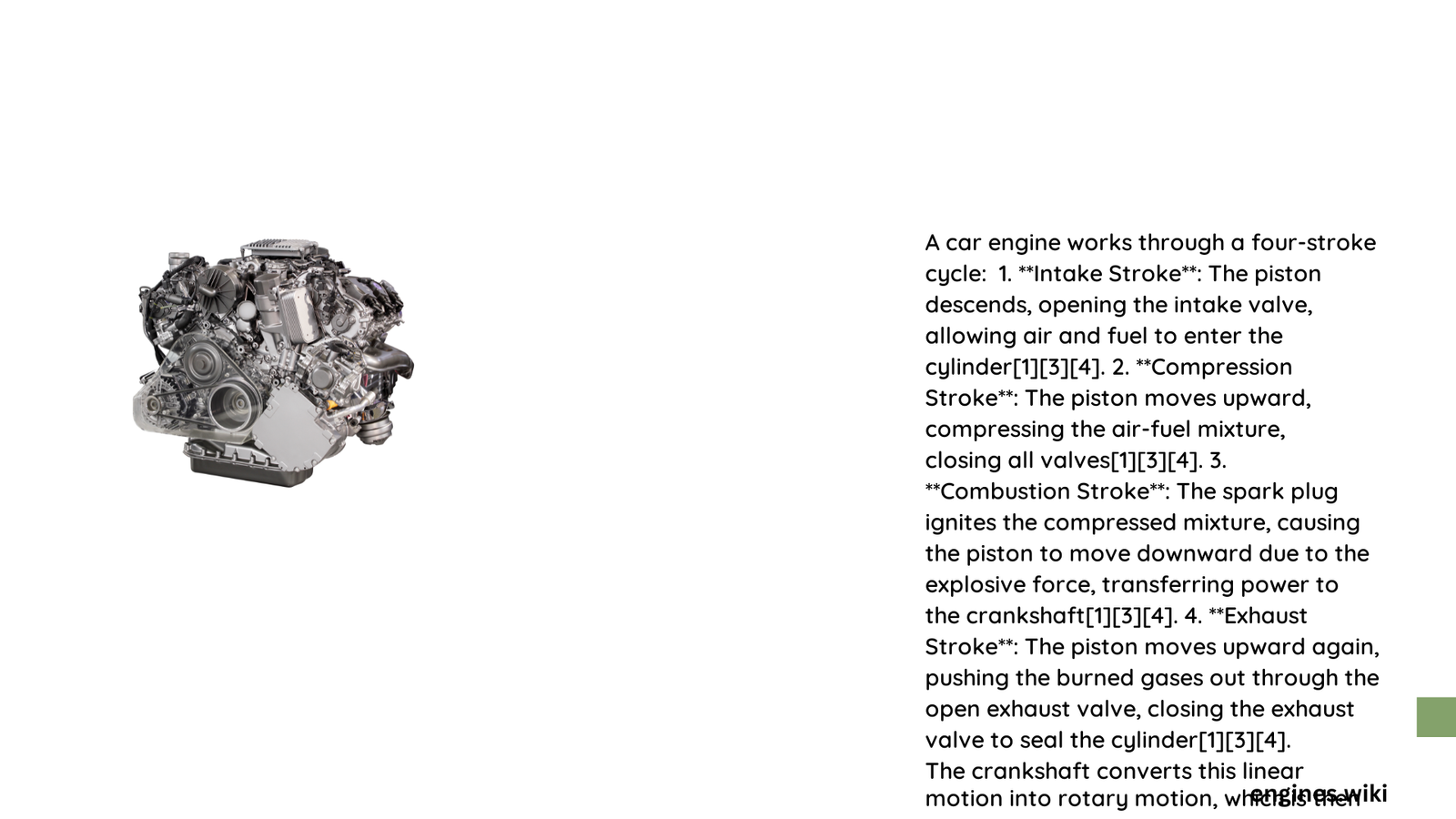How Car Engine Works Step by Step: A Comprehensive Guide
Engine Operation Overview
Modern automotive engines are sophisticated machines that convert chemical energy from fuel into mechanical motion through a precise, multi-stage process. The internal combustion engine operates through four critical stages: intake, compression, combustion, and exhaust, transforming fuel and air into powerful rotational energy that propels vehicles across various terrains.
What Are the Primary Components of an Engine?
Key Mechanical Elements
- Pistons: Cylindrical components moving up and down
- Crankshaft: Converts linear piston motion into rotational energy
- Valves: Control air and fuel entry and exhaust gases
- Spark Plugs: Initiate combustion in gasoline engines
How Does the Intake Stroke Function?
During the intake stroke, several synchronized mechanical actions occur:
1. Piston moves downward
2. Intake valve opens
3. Air-fuel mixture enters cylinder
4. Vacuum effect draws mixture into combustion chamber
| Stage | Piston Position | Valve Status | Air-Fuel Interaction |
|---|---|---|---|
| Intake | Downward Movement | Open | Mixture Enters |
| Compression | Upward Movement | Closed | Mixture Compressed |
What Happens During Compression?
The compression stroke involves:
– Intake valve closes completely
– Piston moves upward
– Air-fuel mixture gets compressed
– Pressure and temperature increase dramatically
– Prepares mixture for combustion
How Does Combustion Generate Power?
Combustion represents the engine’s most critical phase:
– Spark plug ignites compressed mixture
– Rapid gas expansion occurs
– Piston forced downward
– Generates significant mechanical energy
– Transforms chemical energy into motion
What Role Does the Exhaust Stroke Play?
The exhaust stroke completes the engine cycle:
1. Exhaust valve opens
2. Piston moves upward
3. Burned gases expelled from cylinder
4. Prepares chamber for next intake cycle
Technical Efficiency Considerations
Factors Influencing Engine Performance
- Compression ratio
- Air-fuel mixture precision
- Ignition timing
- Mechanical tolerances
- Material quality
Advanced Engine Technologies
Modern engines incorporate sophisticated technologies:
– Direct fuel injection
– Variable valve timing
– Turbocharging
– Electronic control units
– Adaptive combustion management
Precision Engineering Metrics
Performance Calculation Example:
– Thermal Efficiency = Work Output ÷ Heat Input
– Typical Automotive Engine Efficiency: 20-35%
– Theoretical Maximum Efficiency: 37-49%
Maintenance and Longevity
Regular maintenance ensures optimal engine performance:
– Periodic oil changes
– Spark plug replacement
– Fuel system cleaning
– Compression testing
– Valve adjustment
Emerging Technological Trends
- Hybrid propulsion systems
- Electric vehicle integration
- Hydrogen fuel cell technologies
- Advanced materials engineering
- AI-driven engine management
Conclusion
Understanding how car engines work step by step reveals the remarkable engineering behind modern transportation. Each microscopic interaction represents a complex dance of physics, chemistry, and mechanical precision.

